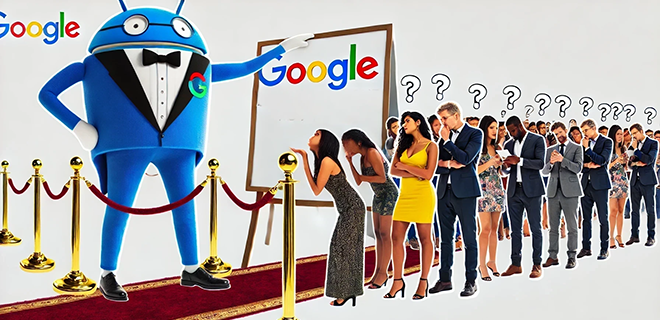
As week two of Google’s antitrust trial unfolded, publishers stepped out of the shadows.
With testimonies revealing Google’s deep grip on ad tech, we unpacked how this could reshape the industry and finally give publishers their due. Watch the full breakdown and get the highlights of the trial here.
Hey Monsters! We’re back with our coverage of week two of Google on Trial, and let’s just say it’s heating up like a summer block party.
This week, we peeled back more layers of Google’s ad tech dominance — revealing how publishers, once sidelined, finally have their grievances heard in court. If week one was the appetizer, week two served the main course, and the DOJ wasn’t holding back.
Catch the full video recap below…
Publishers: “Just Give Me My Money”
Last week’s testimony made it clear — publishers have been getting the short end of the stick. With Google controlling AdX, the biggest pool of premium advertisers, publishers don’t have much leverage. Even though there’s plenty of demand, publishers aren’t cashing in like they should. Between Google’s 20% cut and their alleged sneaky peeks at competitor bids during the First Look days, it’s no wonder publishers felt like they were being squeezed.
It’s like publishers were throwing the biggest club night, but Google controlled the guest list and took a big chunk of the door charge, leaving publishers with barely enough to cover the bar.
Even U.S. District Judge Leonie M. Brinkema bluntly asked: Does Google’s ad tech actually benefit publishers? Spoiler alert: according to the DOJ’s witness, if Google wasn’t meddling in the auction process publishers could’ve walked away with a lot more.
Unified Pricing Rules: A Straitjacket for Publishers
Next up, came the Unified Pricing Rules (UPR). Google sold it as a win for efficiency and innovation, but publishers tell a different story. Matthew Wheatland from The Daily Mail testified that UPR caused a dip in revenue per impression, leaving publishers gasping for air.
Sure, there was an uptick in overall revenue when UPR rolled out, but Wheatland pointed out that this likely came from a surge in web traffic, not from Google’s pricing rules. Without that traffic boost, the hit would’ve been much worse. He also noted that if The Daily Mail tried to move away from Google’s ad server, they’d be staring down a 28% revenue loss. That’s what happens when you’re locked in Google’s ecosystem.
Defense Buzzwords & Bingo Cards: Google’s Shield
Google’s defense team has relied on buzzwords like “brand safety” and “inventory quality” to paint themselves as the good guys.
Our friend Arielle Garcia over at Check My Ads spiced things up with her “Defense Buzzword Bingo,” turning this corporate showdown into a game — literally. But behind all the buzzword smoke, the truth is much harsher. Google’s “innovation” isn’t really about pushing the industry forward — it’s about maintaining an iron grip on ad tech.
Key Testimonies: Behind the Curtain of Ad Tech Monopoly
The courtroom spotlight shone on some big Google players last week. YouTube CEO Neal Mohan stepped in to explain the inner workings of Google’s ad tech strategy, tracing it back to the DoubleClick acquisition. According to Mohan, this acquisition was meant to drive innovation, making life easier for publishers and advertisers. Sounds great, right? But the DOJ didn’t buy it. They pointed out that Google’s shopping spree — including acquisitions like DoubleClick and Admeld — was more about wiping out the competition than building better tools.
Mohan tried to defend Google’s habit of “parking” acquired companies, saying it was about letting them run independently while syncing up their tech. He swore Google’s rise came from “product innovation and services,” but the government painted a different picture — one where Google’s integrated ad stack turned rivals into roadkill.
Then we had Nirmal Jayaram, Senior Director of Engineering at Google, in the hot seat. Jayaram did his best to downplay internal documents showing how Google allegedly used AWBid to snatch up publishers from competitors. His testimony was jam-packed with buzzwords like “latency” and “brand safety,” contradicting earlier evidence about Google’s strategy. There was a big gap between what internal emails said and what was claimed in court. Classic Big Tech spin, if you ask us.
Publishers Finally Seen: The Trial’s Turning Point?
For the first time, publishers are stepping out of Google’s shadow, with their frustrations about ad tech monopolization being aired for everyone to see. As our brother from another mother, AdExchanger’s Anthony Vargas called it — publishers are feeling seen. The years of discontent, the quiet side-eye at conferences, the “let’s call up our Google rep” complaints? They’re now front and center. And it’s about time.
Global Implications: What Happens Next?
This trial isn’t just a U.S. thing. The ripple effects are being felt worldwide, from the U.S. courtroom to the EU, where regulators are watching with popcorn in hand. Sure, Google scored a small win in Europe last week, dodging a $1.66 billion antitrust fine. But don’t let them pop the champagne just yet — the global fight against Big Tech dominance is far from over.
Stay tuned as Andrew Byrd, Yakira Young, and Lynne d Johnson return to dive deep into week three of Google on Trial.